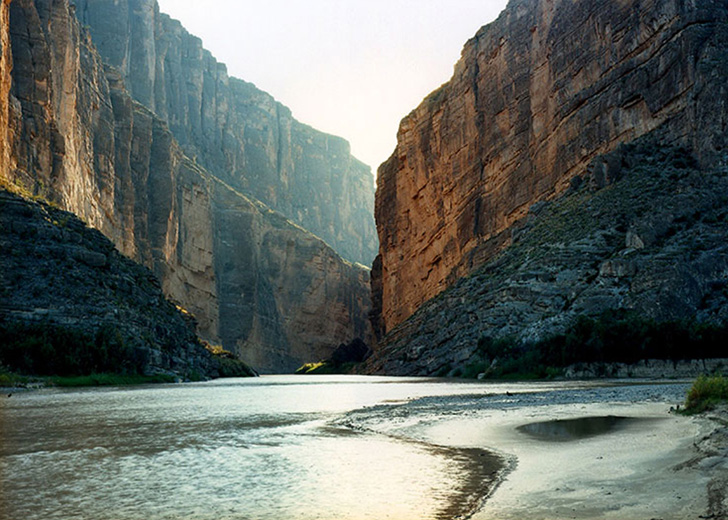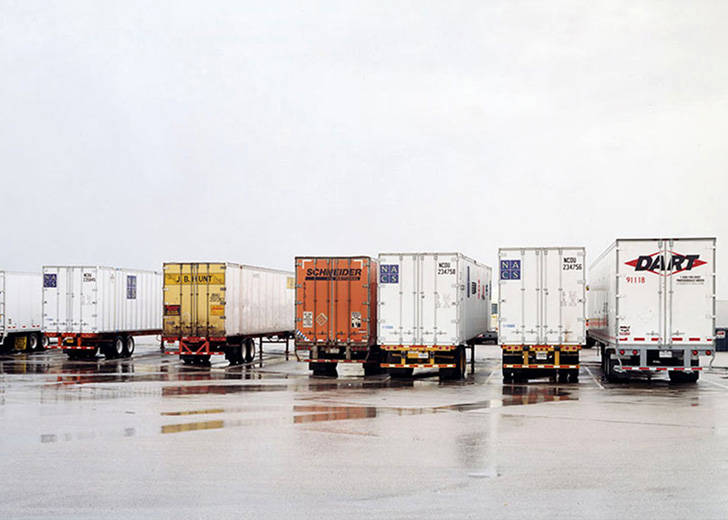
MinerAlert

MinerAlert
August 20 - October 24, 2015
Thursday, September 24, 2015
6:00pm - 7:00pm Rubin Center Auditorium
For more than a decade, Victoria Sambunaris (American, born 1964) has traversed the United States equipped with a five-by-seven wooden field camera and sheets of color negative film. Covering seemingly every road and freeway between the coasts and beyond, she has captured the vast American landscape and terrain, and its intersection with civilization. Sambunaris has said that she has “an unrelenting curiosity to understand the American landscape and our place in it.” While humans are in awe of the power of nature, we are also energetic and domineering diggers, builders, and settlers. Sambunaris’s photographs thus strikingly record our ongoing, uneasy relationship with the natural world.


Through straight-on framing, precise focus, and uniform lighting, Sambunaris uses consistent photographic methods to depict diverse subject matter—from trains in Nebraska and Texas to trucks in New Jersey and Wisconsin, the oil pipeline in Alaska, uranium tailings in Utah, and steam vents in Yellowstone National Park. Her photographs at once convey the grandeur of the American landscape and the subtle, yet sometimes overpowering, cues to the country’s capitalist mentality. As she explains, “It is the anomalies of an ordinary landscape that have become the locus of my work: massive warehousing, infinite distribution facilities, and systematized shipping terminals. These numerous paradigmatic structures, I sense, portend the future of landscape and our relationship to it.”
Since October 2009, Sambunaris has photographed along the nearly 2,000 miles of territory that make up the border between Mexico and the United States. She has traveled from Brownsville, Texas to San Diego, California and back, attempting to convey a unity within the landscape, regardless of where one happens to stand. Her photographs refer to the border’s political drama through conceptual references, as in her photograph of the Rio Grande River in Big Bend National Park, where dramatic deep canyon river walls physically divide the United States and Mexico, or by documenting tangible evidence, such as the contentious border fence that separates an otherwise seamless landscape. Both photographic methods reflect the topographic beauty and the political tensions that exist along the border.

As a first-generation Greek-American with immigrant parents who came to the United States in search of the American dream, Sambunaris sympathies with the tension along the border. Her memories of her family’s tradition of driving through the Amish countryside of Pennsylvania, and recollections of marveling at the farms, highways, and structures they encountered have also profoundly influenced her life and work as an artist. Sambunaris’s collected ephemera—the essential, and incidental, elements of her work as a photographer and researcher—are also included in this exhibition along with a video documenting her travels and work processes. Books on geology and history, maps, and artifacts collected on her journeys, such as mineral specimens, journals, road logs, and personal gifts, as well as over 1,500 of her small photographic sketches together form an intimate view of the artist’s life on the road. Sambunaris photographs the landscape as a document and metaphor for the American experience, bringing into view with photographic precision the vast, open-ended mystery and unease of a country where human intervention and natural beauty inspire wonder in equal measure. Victoria Sambunaris: Taxonomy of a Landscape originated at the Albright-Knox Art Gallery in Buffalo, New York and was organized by Christie Mazuera Davis, Program Director, Contemporary Art and Public Programs at the Lannan Foundation, and Albright-Knox Curator for the Collection Holly E. Hughes. The MoCP’s presentation and subsequent tour of Victoria Sambunaris: Taxonomy of a Landscape has been generously supported by the Lannan Foundation, Santa Fe, New Mexico.